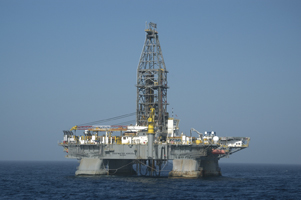ARTful Measures
Convergence boosts capital available to respond to catastrophic loss
Over the past hundred years or so, the relationship between insurance companies and their reinsurers became well-defined and known to all the parties involved in the supply chain. Despite this well-established relationship, there was one overriding concern: lack of adequate capital to pay for major loss events.
This concern was only heightened by the occurrence of several large losses. Hurricane Andrew in 1992 put up the first red flag. The events of September 11, 2001, provided further evidence that the insurance business could suffer significant losses that could endanger the entire international insurance community. However, Hurricane Katrina was the real wakeup call to many in the insurance industry. Obviously, the big issue was the availability of adequate capital to pay claims.
Capacity issues continued to be a topic of much speculation within the insurance sector, with most concern being voiced by individuals who were studying the theory of large losses, rather than practitioners. Many believed that the capital markets, with their limitless source of funds, could provide a viable solution. Most viewed convergence of the two—capital markets and the insurance market—as likely, and they viewed the two as natural bedfellows. Insurance-linked securities (ILS) grew out of this.
Insurance professionals who have not realized the growth of the ILS market are in for a major surprise. This is an active market that is gaining converts by the day.
To be sure, other issues had the insurance industry’s attention. For example, participants on the investor side (the capital market) saw a variety of advantages in working with the insurance marketplace. From the standpoint of portfolio management, investors viewed ILS as an almost-perfect example of investment diversification. They represented a “zero beta” investment, meaning that results from these types of instruments would have no correlation with the results in the stock market. In addition, at the time of the first ILS, insurance instruments were providing higher yields via higher interest rates, which were of significant interest to the capital markets.
Interest from the insurance marketplace also was significant; participants saw an unending source of cash that would assure the continued viability of the insurance market. And as the market has grown, more participants have joined the ranks of ILS proponents.
Most participants are glad to see this growth, “since it allows for more diversity, which is a good thing,” says Tom Johansmeyer, assistant vice president–reinsurance service, marketing at Verisk/ISO, a leading source of information about property/casualty insurance risk. He says that, despite the growth provided by the capital markets, some insurers “still rely on the global reinsurance market” for their catastrophic protection. But more carriers are beginning to develop strategic plans that utilize ILS, and they have even incorporated specific percentages for capital market involvement.
Plusses and minuses
The ILS market provides a number of advantages that the insurance industry can no longer ignore. According to Johansmeyer, “One of those advantages is the multi-year feature.” Utilizing a multi-year policy during a volatile period can be extremely useful and, as he notes, these multi-year features are key, when you consider that decisions go far beyond a one-year renewal.
One of the disadvantages of CAT bonds has historically been the time, effort, and cost required to bring a bond to market. Since these are manuscript policies, each has unique terms and conditions that significantly increase the transaction cost, as well as the time it takes to get to market. Additionally, the original CAT bonds had no liquidity after the original bond was sold. This shortcoming has since been greatly reduced by establishing an open market on the commodity exchange. Today, CAT bonds can be freely bought and sold via the exchange.
Many potential CAT bond customers have been reluctant to get involved in the market because of transactional concerns. These issues have been greatly reduced, however, by the introduction of a new ILS product a couple of years ago. Known as “CAT bond lite” transactions, they still require full collateralization but can use standardized documentation, thereby facilitating greater speed to market and lower transactional cost.
It is generally believed that the “lites” would be considered a stepping stone for investors that want to get their feet wet in the ILS market.
Insurance sector participants have accepted ILS at different rates. The ILS market started in earnest about 10 years ago and since then has grown slowly. A few insurers and reinsurers saw the value early on. At this point, Johansmeyer notes, there is “a core of carriers that look to the ILS market for retrocession protection.”
He says, “Carriers such as State Farm and Allstate are examples of this group.” However, he points out that “early adopter USAA is an exception to the rule. They recently completed their 28th transaction.” Today’s market is growing in part due to a more dynamic entry and exit procedure.
The question remains: Where is the market headed? One thing for sure is thatwe’ll continue to see innovation in both the terms and conditions, and we’ll see expanded geographic scope of coverage. For the most part, the first insurance-linked securities were limited in scope to the United States. And the U.S. still has a lion’s share of coverage. However, the geographic scope has expanded significantly, to include Canada, Mexico, European Union countries, China, Turkey, Australia and others.
Setting records
Growth has been nothing short of phenomenal. In reporting results for the first half of 2017, ISO titled its report “Brute Force.” This title recognized the remarkable results reported thus far. The report says, “Following a record-setting first quarter, catastrophe bond issuance activity surged even further. Sponsors completed 21 transactions and raised an eye-popping $6.5 billion. That brought first-half totals to 29 transactions and nearly $8.8 billion in new limits.”
To put this in perspective, the report says, activity in the first half of 2017 was greater than any prior full year in catastrophe bond market history—and the activity in the second quarter alone was more than that of all but four prior full years. When all was said and done, 2017 activity was up a staggering 213% year over year.
Emerging risks will continue to be an important part of the ILS market. The current market is investigating longevity risk and feels that this could become a major focus of the ILS movement. Johansmeyer indicates that Verisk/ISO is exploring the marine and energy sectors. He also points out that “cyber and terror should provide significant opportunities.”
Liability exposures, however, have little chance of future involvement. “Long-tail business is difficult to deal with,” he notes. It is clear that the ILS market will continue to be quite opportunistic in the future.
Insurance professionals who have notrealized the growth of the ILS market are in for a major surprise. This is an active market that is gaining converts by the day. For the most part, the industry’s concern about providing adequate capital in the event of a catastrophic loss has been greatly reduced.
The author
Michael J. Moody, MBA, ARM, is the retired managing director of Strategic Risk Financing, Inc. (SuRF), a firm that was established to provide consulting services to captives.






